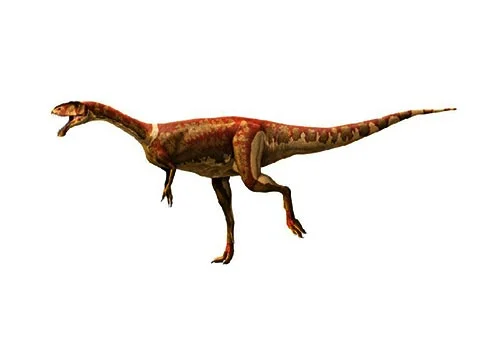Masiakasaurus (Vicious lizard)

Mah-shee-ah-kah-sore-us
Scott D. Sampson, Matthew Carrano, and Catherine A. Forster - 2001
Carnivore
Estimated 1.8 meters long
Small Theropod
M. knopfleri (type)
Madagascar, Maevarano Formation
Late Cretaceous, 70-66 million years ago
Masiakasaurus Facts
Masiakasaurus was a small predatory dinosaur that lived during the Late Cretaceous period, about 70 to 66 million years ago. Its fossils have been found in the Mahajanga Basin of Madagascar, and it is named after the word “masiaka”, which means “vicious” in the local Malagasy language.
Masiakasaurus was a relatively small dinosaur, measuring about 1.8 meters (6 feet) in length and weighing around 20 to 30 kilograms (44 to 66 pounds). It had a unique and distinctive set of teeth, which were long, curved, and serrated, giving it a saw-like appearance. These teeth suggest that Masiakasaurus was a fish-eating dinosaur, and it likely hunted in the shallow waters along the coast of ancient Madagascar.
Masiakasaurus also had a long and narrow snout, which gave it a somewhat crocodile-like appearance. It had sharp claws on its hands and feet, which it likely used to catch and hold onto slippery prey such as fish. Despite its small size, Masiakasaurus was a formidable predator in its ecosystem.
One of the most interesting things about Masiakasaurus is its unique jaw structure. Unlike most other theropod dinosaurs, which had hinged jaws that opened and closed vertically, Masiakasaurus had a lower jaw that was hinged further back and could move forward and downward to create a sort of “trap-jaw” mechanism. This allowed Masiakasaurus to deliver a powerful bite to its prey, which it could then hold onto with its sharp teeth.
Masiakasaurus is an important dinosaur for paleontologists because it is one of the few known predators from the Late Cretaceous of Madagascar, and it provides valuable information about the unique ecosystem that existed on the island during this time period. Its unusual jaw structure also provides insights into the evolution of theropod dinosaur feeding mechanisms.



